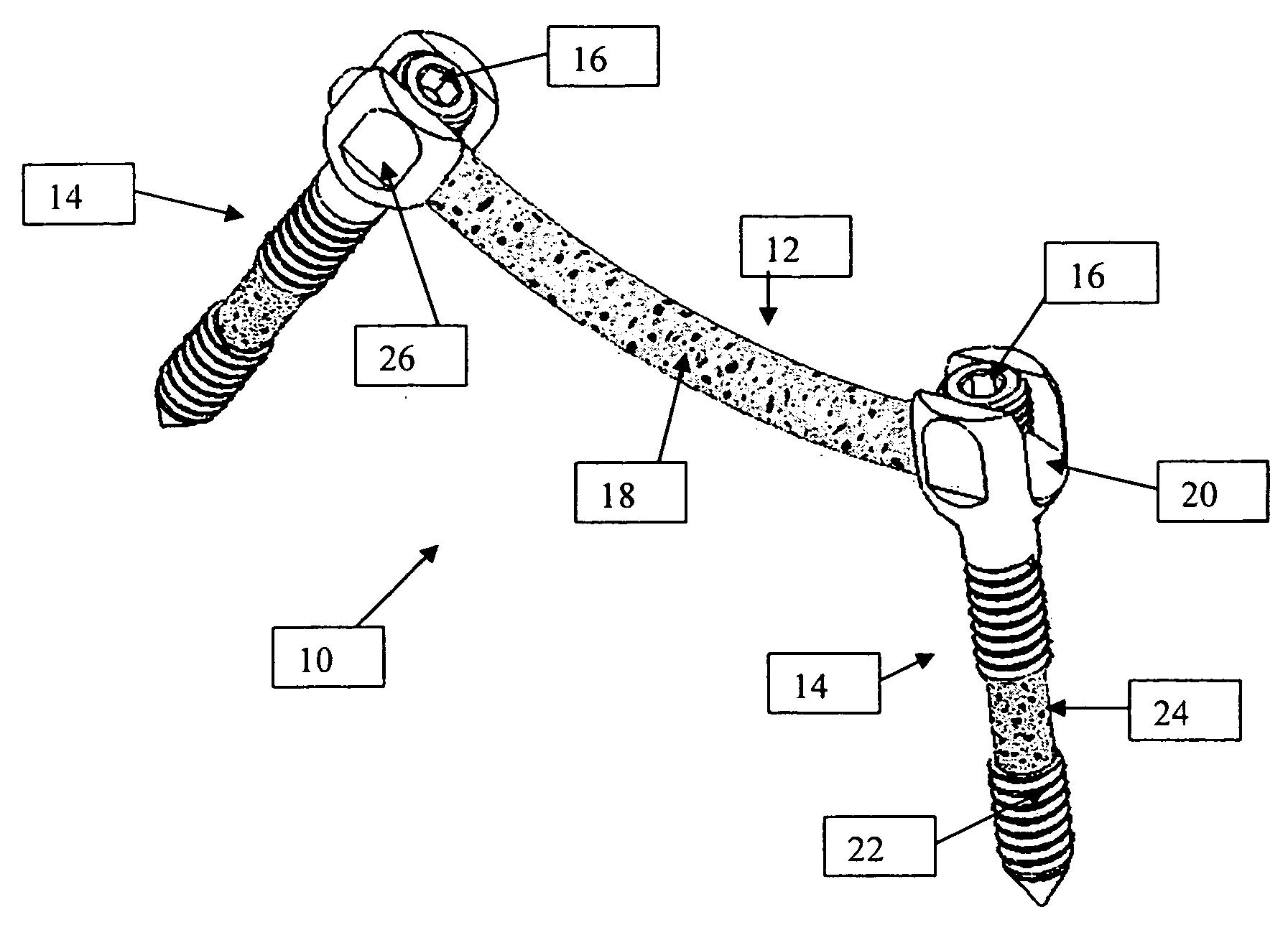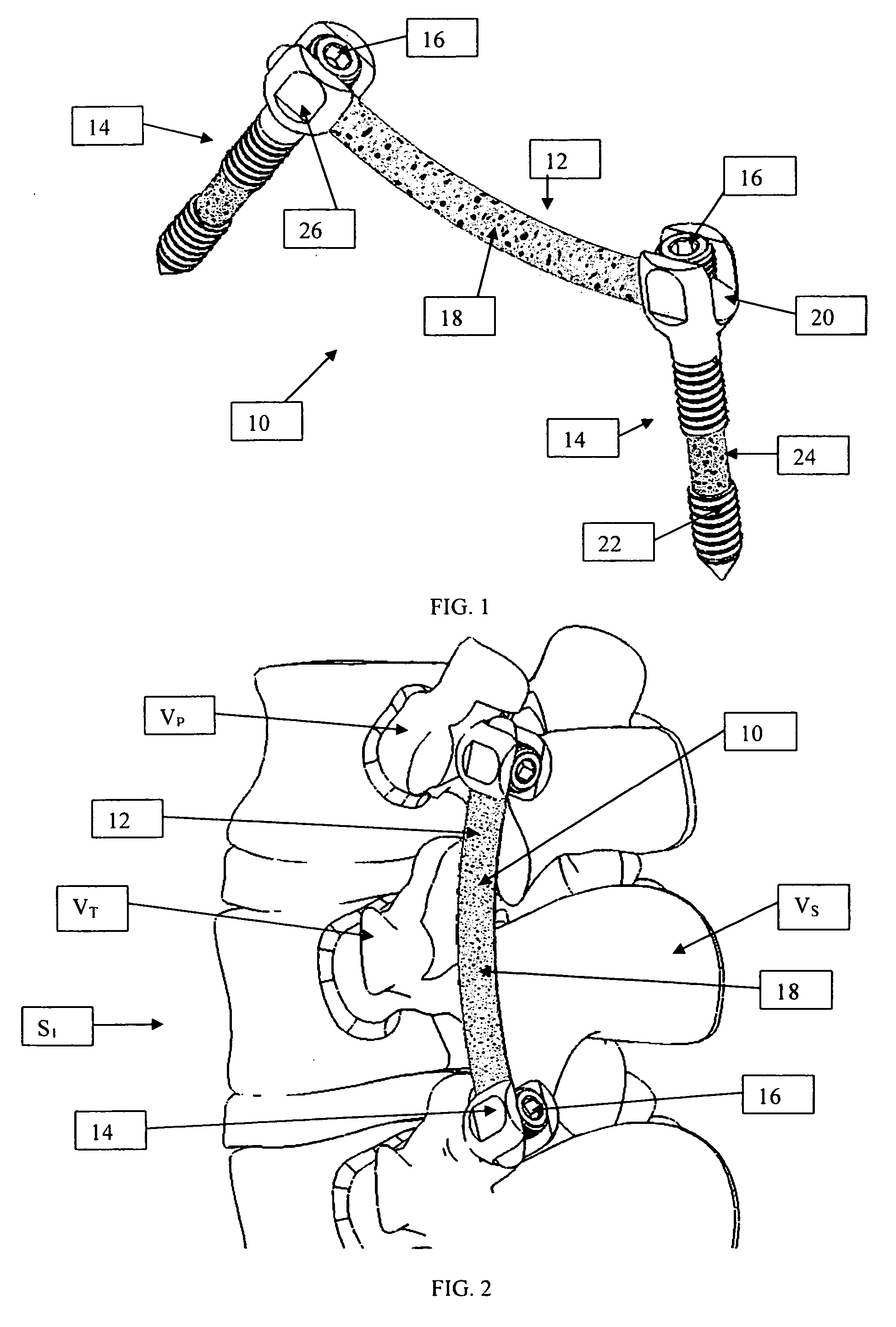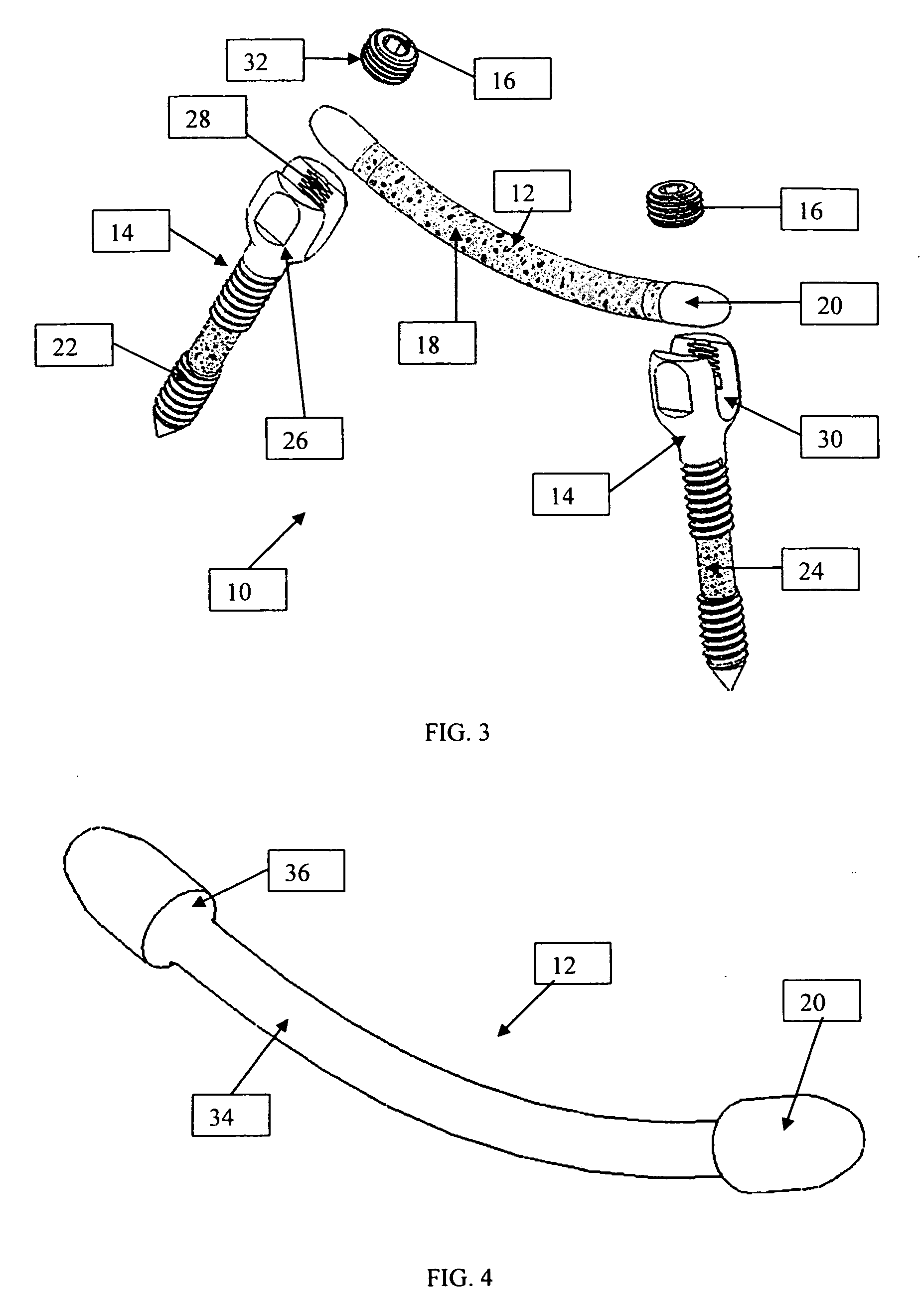Osteoconductive spinal fixation system
a spinal fixation system and conductive technology, applied in the field of osteoconductive spinal fixation system, can solve the problems of fixation device, difficulty in post-operative monitoring and evaluation of the fusion process, extreme and debilitating pain of patients with such conditions, etc., and achieve the effect of high strength, high strength and high strength for spinal loading
- Summary
- Abstract
- Description
- Claims
- Application Information
AI Technical Summary
Benefits of technology
Problems solved by technology
Method used
Image
Examples
Embodiment Construction
[0036] As shown in the exemplary drawings, an osteoconductive spinal fixation device referred to generally in FIGS. 1-3 by the reference numeral 10 is provided for attachment to at least a pair of adjacent patient bones such as spinal vertebrae S1 (FIG. 2) to maintain the skeletal structures in spaced relation while promoting bone ingrowth and fusion. In general, the improved fixation device 10 comprises a bio-compatible support structure such as the illustrative rod 12 having a dense substrate 34 (FIG. 4) providing a strong mechanical load bearing structure and a porous construction 18 to define an open lattice conducive to bone ingrowth and fusion. The preferred embodiment is manufactured from a high strength ceramic material, allowing for load carrying abilities, as well as substantial radiolucency and non-magnetic characteristics. This open-celled construction 18 is coated internally and externally with a biologic coating selected for relatively high osteoconductive and bio-acti...
PUM
| Property | Measurement | Unit |
|---|---|---|
| pore size | aaaaa | aaaaa |
| pore sizes | aaaaa | aaaaa |
| pore sizes | aaaaa | aaaaa |
Abstract
Description
Claims
Application Information
 Login to View More
Login to View More - R&D
- Intellectual Property
- Life Sciences
- Materials
- Tech Scout
- Unparalleled Data Quality
- Higher Quality Content
- 60% Fewer Hallucinations
Browse by: Latest US Patents, China's latest patents, Technical Efficacy Thesaurus, Application Domain, Technology Topic, Popular Technical Reports.
© 2025 PatSnap. All rights reserved.Legal|Privacy policy|Modern Slavery Act Transparency Statement|Sitemap|About US| Contact US: help@patsnap.com



